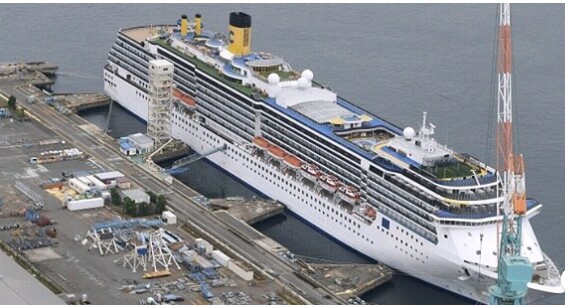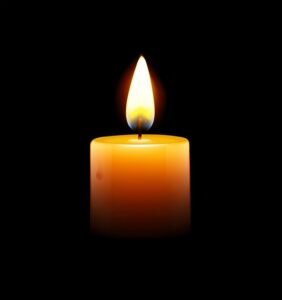
Nearly 50 out of over 600 crew members on an Italian cruise ship docked for repairs in Japan’s Nagasaki have tested positive for the coronavirus.
This new case has raised concern about its strain on the city’s hospitals if conditions worsen for those infected.
So far, 127 people have been tested, and the infection rate is 38 percent.
The latest tests showed on Thursday that 14 people aboard, all either cooks or those serving food, were infected with the virus, reports said.
One patient who had been taken to hospital previously was now in serious condition and on a ventilator, reports said.
Those showing mild or no symptoms remain on board, and officials said they hoped to complete testing of all 623 crew this week.
The Costa Atlantica infections come after the cases on the Diamond Princess cruise ship in Yokohama two months ago, where more than 700 passengers and crew were found to be infected, although this time only crew members were on board.
The Costa Cruises-operated ship was taken into a shipyard in Nagasaki in western Japan in late February by Mitsubishi Heavy Industries after the COVID-19 pandemic had scuttled plans for scheduled repairs in China.
The latest cases have raised concern about the potential impact on Nagasaki residents after revelations some crew had left the restricted area despite assurances from the ship operator that they would stay within the wharf. Details on their movements were still being sought, reports said.
Authorities are also concerned about the potential rise in patients who require hospitalisation, as an increase in domestic coronavirus cases strain medical services around the country.
Japan has seen more than 12,000 infections and over 300 deaths from the coronavirus, excluding figures from the Diamond Princess.
Compared with the Diamond Princess outbreak, the present situation is more dangerous because it represents “community transmission” of the virus that can spread through hospitals, said Kenji Shibuya, director of the Institute for Public Health at King’s College, London.
“So I’m very worried, because this could have been prevented,” Shibuya added.
To make room at hospitals for severely ill patients, some local governments have begun monitoring those with milder symptoms in hotels or at their homes – a move that proved fatal for one man in his 50s in Saitama prefecture who died at home this week while waiting for a hospital bed.
Asked about the man’s death, Chief Cabinet Secretary Yoshihide Suga said on Thursday the health ministry was working to find out how many COVID-19 patients were being monitored at home, and how many had died outside hospitals.
Prime Minister Shinzo Abe has declared a nationwide state of emergency at least through May 6, asking schools and non-essential businesses to close for the duration.
New cluster-like infections continue to be reported, including at hospitals.
On Thursday, Toyama city determined that the infections of four children and a schoolteacher originated in the same classroom when the school briefly opened in early April, reports said. ’’There have been no clusters at schools so far.’’ Japan’s education ministry said.
By Olusola Akintonde












